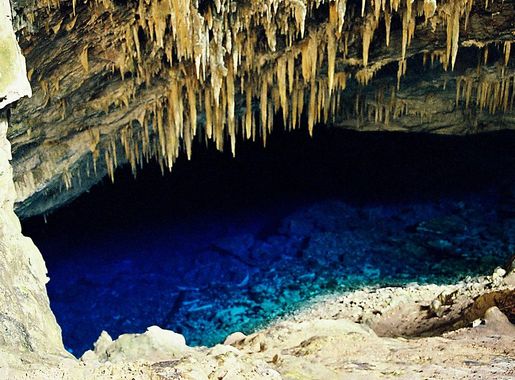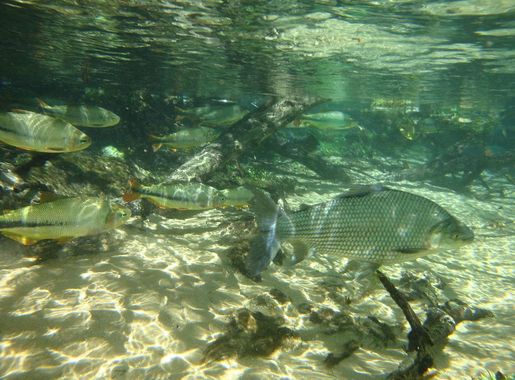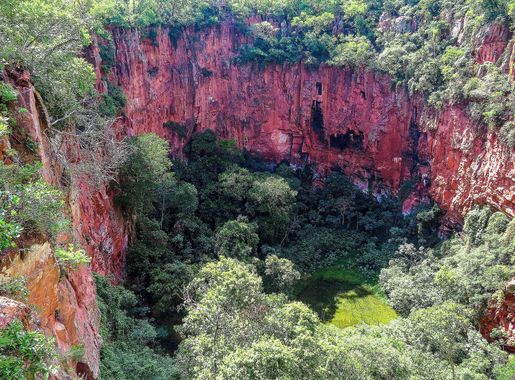
Bonito: Brazil's Natural Aquatic Wonderland
Discover Bonito, Brazil's Hidden Gem: Crystal-clear Waters, Vibrant Wildlife, and Unforgettable Adventures Await in This Natural Paradise.
Bonito, located in the state of Mato Grosso do Sul, Brazil, is a paradise for nature lovers and adventure seekers. Known for its crystal-clear rivers, stunning waterfalls, and vibrant underwater ecosystems, Bonito offers an unparalleled opportunity to connect with nature. The town itself is small and charming, offering a warm welcome to visitors from around the globe. One of the main attractions in Bonito is snorkeling in the Rio da Prata, where the visibility can reach up to 50 meters. The river is home to a dazzling array of fish and aquatic plants, making it feel like you're swimming in an aquarium. For those who love diving, the Anhumas Abyss offers a unique experience. This enormous cave features a lake where divers can explore underwater formations that are millions of years old. Beyond the water activities, visitors can hike through lush forests, visit the iconic Blue Lake Cave (Gruta do Lago Azul), and enjoy bird watching in the Serra da Bodoquena National Park. The region also offers opportunities for rappelling, zip-lining, and horseback riding. The local cuisine, rich in fish and tropical fruits, adds another layer of charm to your visit. Bonito is not just a destination; it's a journey into Brazil's natural beauty. Whether you're floating down a river surrounded by fish or exploring the depths of an ancient cave, Bonito promises a memorable and awe-inspiring adventure.
Local tips in Bonito
- Book your tours in advance. Many attractions have limited daily slots to preserve the environment.
- Bring biodegradable sunscreen and insect repellent to protect the local ecosystem.
- Wear water shoes for river activities; they provide better grip and protection.
- Visit during the dry season (May to September) for the best visibility in rivers and caves.
- Try the local fish dishes, especially the 'Pacu' and 'Pintado', for a true taste of the region.
Bonito: Brazil's Natural Aquatic Wonderland
Bonito, located in the state of Mato Grosso do Sul, Brazil, is a paradise for nature lovers and adventure seekers. Known for its crystal-clear rivers, stunning waterfalls, and vibrant underwater ecosystems, Bonito offers an unparalleled opportunity to connect with nature. The town itself is small and charming, offering a warm welcome to visitors from around the globe. One of the main attractions in Bonito is snorkeling in the Rio da Prata, where the visibility can reach up to 50 meters. The river is home to a dazzling array of fish and aquatic plants, making it feel like you're swimming in an aquarium. For those who love diving, the Anhumas Abyss offers a unique experience. This enormous cave features a lake where divers can explore underwater formations that are millions of years old. Beyond the water activities, visitors can hike through lush forests, visit the iconic Blue Lake Cave (Gruta do Lago Azul), and enjoy bird watching in the Serra da Bodoquena National Park. The region also offers opportunities for rappelling, zip-lining, and horseback riding. The local cuisine, rich in fish and tropical fruits, adds another layer of charm to your visit. Bonito is not just a destination; it's a journey into Brazil's natural beauty. Whether you're floating down a river surrounded by fish or exploring the depths of an ancient cave, Bonito promises a memorable and awe-inspiring adventure.
When is the best time to go to Bonito?
Iconic landmarks you can’t miss
Liberty Square
Experience the vibrant atmosphere of Liberty Square in Bonito, where culture, nature, and culinary delights come together in a picturesque plaza.
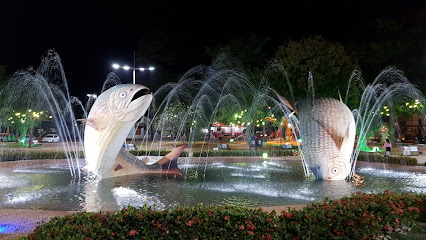
Nascente Azul
Discover crystal-clear waters, vibrant wildlife, and breathtaking landscapes at Nascente Azul in Bonito, Brazil, the ultimate ecological park experience.
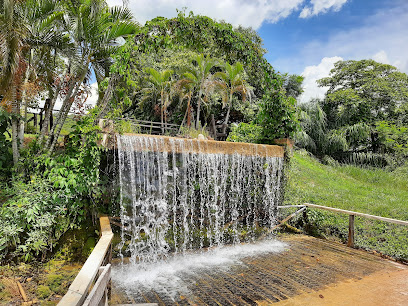
Bonito Municipal Balneary
Explore the natural beauty and crystal-clear waters at Bonito Municipal Balneary, a perfect destination for relaxation and adventure in Brazil.
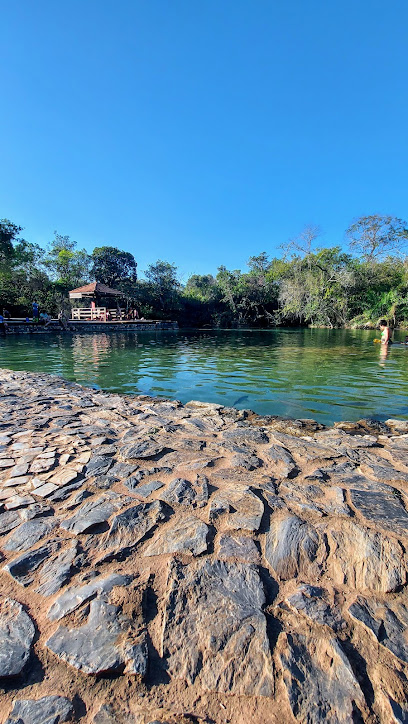
Recanto Ecológico Rio da Prata - Flutuação em Bonito MS
Explore the breathtaking beauty of Recanto Ecológico Rio da Prata, a pristine eco-tourism destination in Bonito, MS, offering unforgettable floating and hiking experiences.
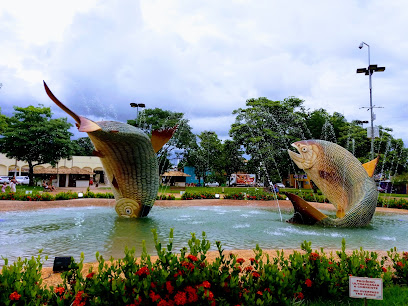
Gruta do Lago Azul Natural Monument
Explore the enchanting Gruta do Lago Azul, a breathtaking natural monument in Bonito, Brazil, famous for its stunning blue lagoons and impressive limestone formations.
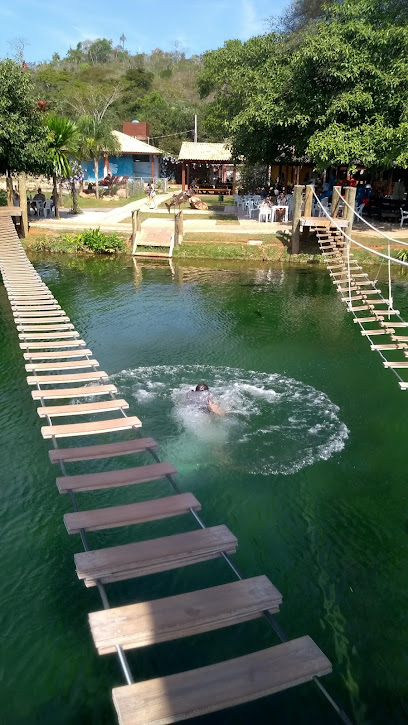
Sucuri River Bonito Ecotourism
Explore the stunning crystal-clear waters and vibrant biodiversity of Sucuri River, a top ecotourism destination in Bonito, Brazil.
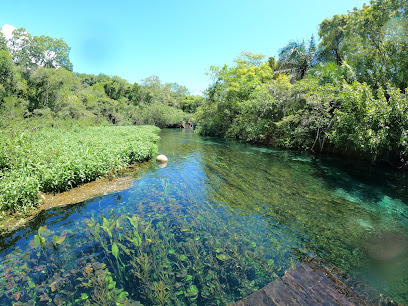
Praia da Figueira
Explore Praia da Figueira, a stunning blend of adventure and relaxation in Bonito, MS, featuring thrilling water slides and serene natural beauty.
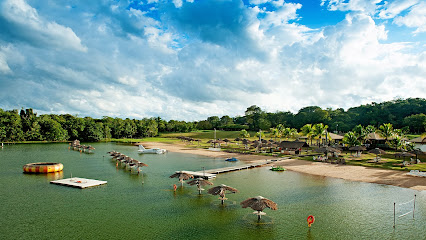
Gruta Catedral
Discover the awe-inspiring Gruta Catedral in Bonito, Brazil, a stunning limestone cave with breathtaking formations and crystal-clear waters.
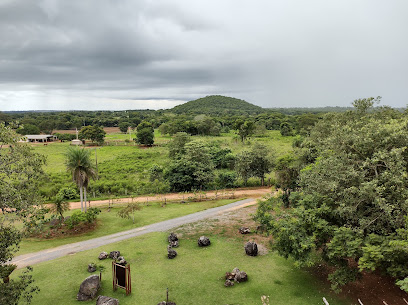
Natural Aquarium
Explore the Natural Aquarium in Bonito, Brazil, a captivating tourist attraction showcasing aquatic life and promoting environmental conservation.
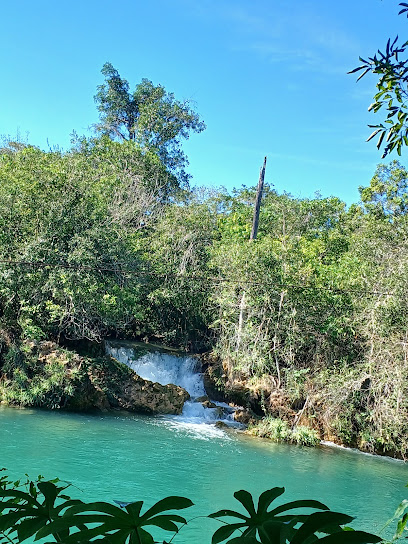
Balneário do Sol
Experience the serene beauty and adventure of Balneário do Sol, a stunning park in Bonito, Brazil, perfect for nature lovers and families.
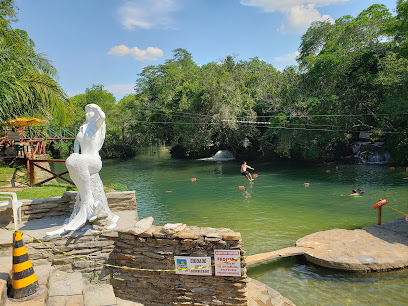
Eco Park Porto da Ilha
Discover the splendor of Eco Park Porto da Ilha in Bonito, where thrilling water adventures meet nature's beauty for an unforgettable experience.
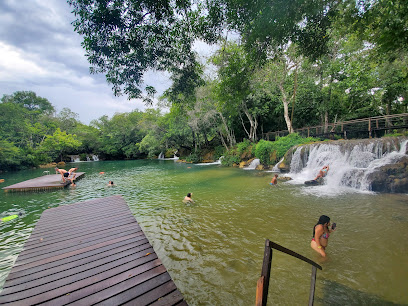
Waterfall Boca da Onca
Experience the breathtaking beauty of Waterfall Boca da Onca, a natural wonder in Bodoquena, perfect for hiking and nature exploration.
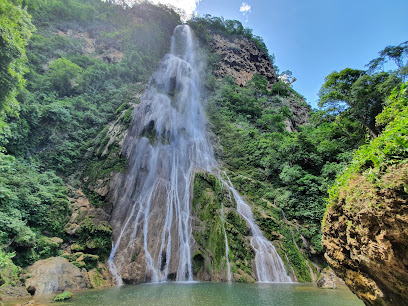
Estância Mimosa Ecoturismo - Cachoeiras em Bonito, MS
Explore the enchanting waterfalls and lush landscapes of Estância Mimosa Ecoturismo, a natural paradise in Bonito, MS, Brazil.

Zagaia Eco Resort
Discover tranquility at Zagaia Eco Resort, where luxury meets nature in the heart of Brazil's stunning Mato Grosso do Sul region.

Ecological Park River Formoso
Explore Ecological Park River Formoso in Bonito, Brazil – a pristine natural wonder filled with crystal-clear waters, diverse wildlife, and unforgettable experiences.
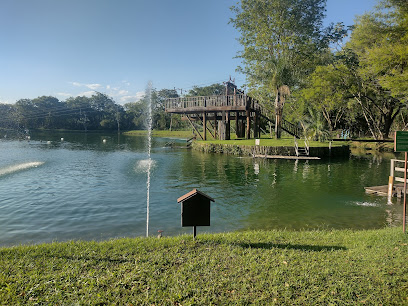
Unmissable attractions to see
Liberty Square
Discover the vibrant heart of Bonito at Liberty Square, where nature, culture, and community come together in a picturesque plaza.
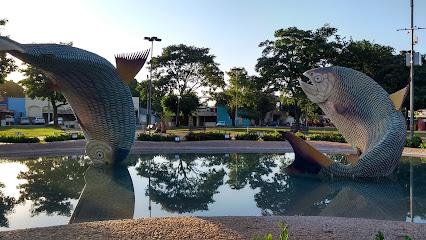
Bonito Municipal Balneary
Experience the natural beauty of Bonito Municipal Balneary, a tranquil oasis with crystal-clear waters and lush surroundings perfect for relaxation and fun.
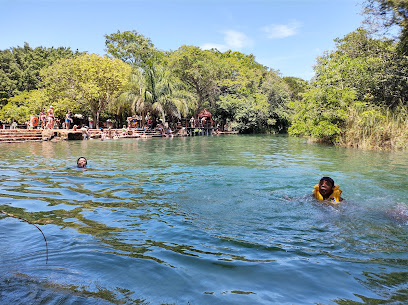
Gruta Catedral
Explore Gruta Catedral in Bonito, Brazil, where nature's stunning stalactites and stalagmites create an unforgettable underground wonder.
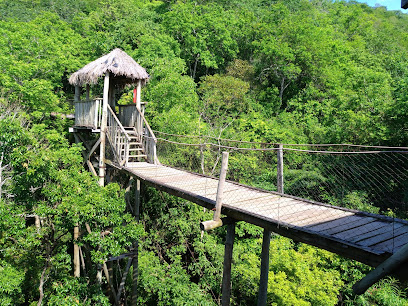
Natural Aquarium
Explore the captivating underwater world at Natural Aquarium in Bonito, where stunning marine life meets serene natural beauty.
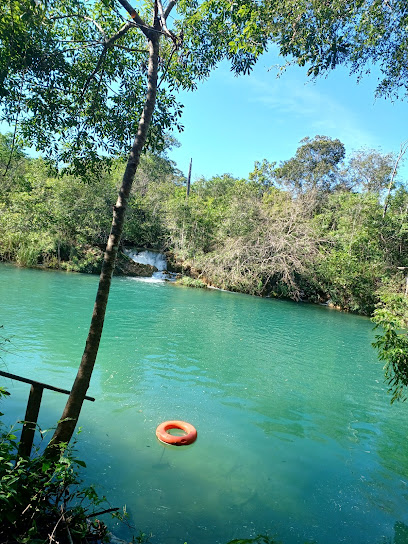
Barra do Sucuri
Experience the breathtaking beauty of Barra do Sucuri, a must-visit ecotourism destination in Bonito, Brazil, known for its crystal-clear rivers and lush landscapes.

Bonito's aquarium
Discover the stunning marine life and conservation efforts at Bonito's Aquarium, a premier tourist attraction in the heart of Brazil.
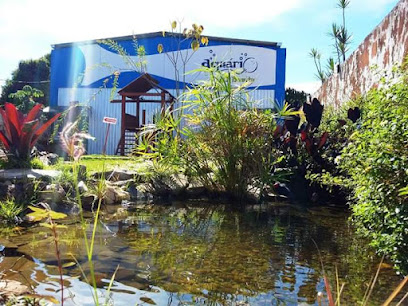
Waterfalls Park
Discover the enchanting beauty of Waterfalls Park in Bonito, Brazil, where nature's wonders and serene landscapes await every visitor.
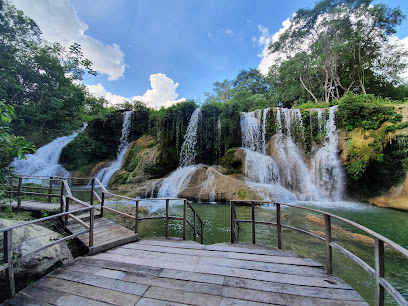
Lagoa Misteriosa
Discover the enchanting beauty of Lagoa Misteriosa, a crystal-clear lagoon perfect for diving and exploring the vibrant underwater world in Brazil.

Gruta do Mimoso
Explore the breathtaking beauty of Gruta do Mimoso, a captivating cave in Bonito, Brazil, filled with stunning rock formations and crystal-clear waters.
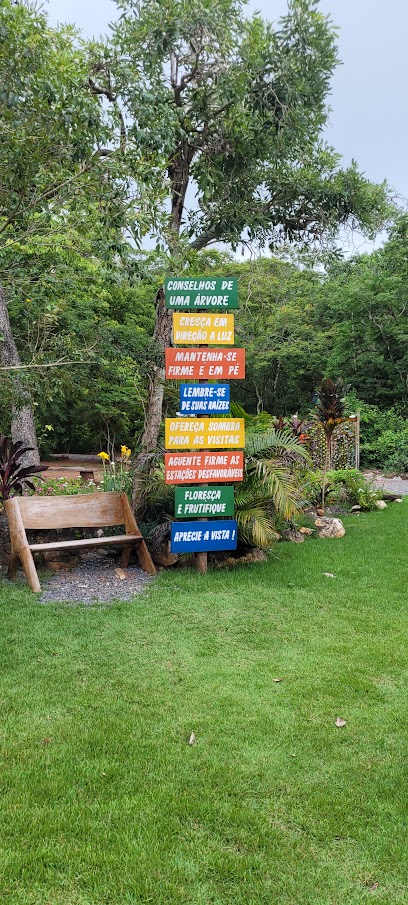
Abismo Anhumas
Dive into adventure at Abismo Anhumas, a breathtaking submerged cave in Bonito, Brazil, perfect for thrill-seekers and nature enthusiasts alike.
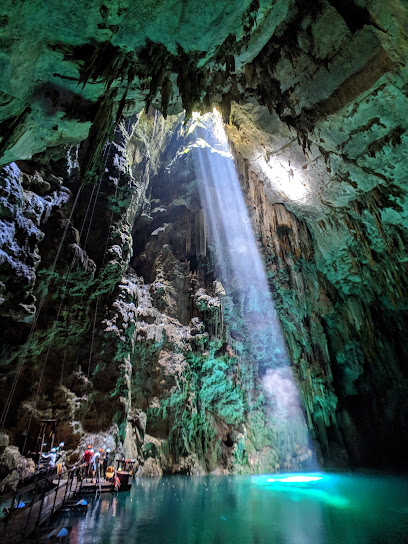
Segunda do Nascente Rio Sucuri
Explore Rio Sucuri in Bonito, Brazil: A breathtaking river adventure with crystal-clear waters and abundant wildlife awaits you in this natural paradise.
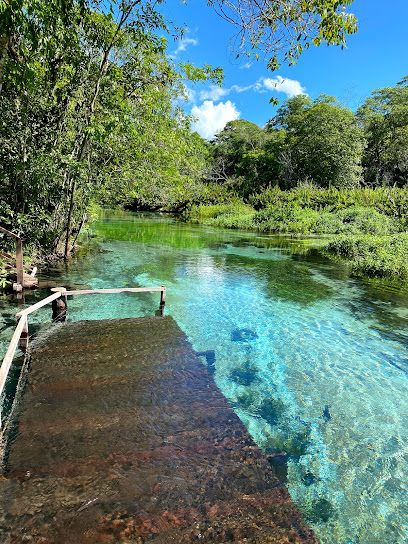
Reserva Ecológica Baia Bonita
Explore the breathtaking beauty of Reserva Ecológica Baia Bonita, a natural paradise in Bonito, Brazil, perfect for eco-tourists and adventure seekers.
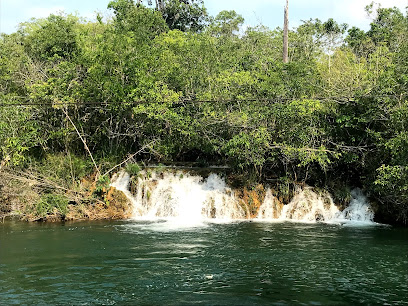
Essential places to dine
Juanita Restaurante
Experience exquisite local flavors at Juanita Restaurante in Bonito - where every dish tells a story.
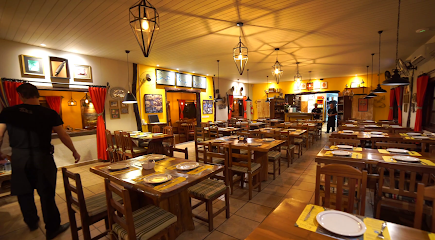
Casa do João
Discover the eclectic flavors of Brazil at Casa do João in Bonito - where every meal is a celebration of taste.
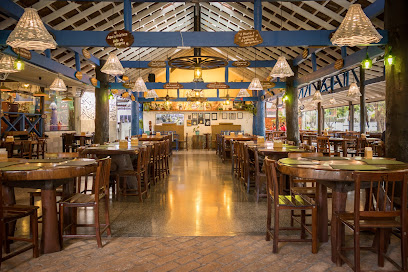
Restaurante Pantanal Grill na Brasa
Experience authentic Brazilian cuisine at Pantanal Grill na Brasa in Bonito - where delicious grilled meats meet local flavors.
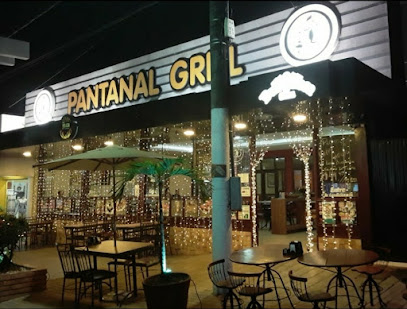
Restaurante Do Marco Velho
Discover the rich flavors of Brazilian cuisine at Restaurante Do Marco Velho, a buffet paradise in Bonito offering fresh local dishes.
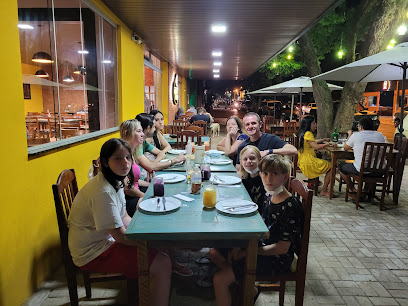
Zapi Zen
Discover Zapi Zen in Bonito – where health meets delicious pizza amidst breathtaking Brazilian landscapes.

Taboa Bar
Discover the vibrant flavors and lively atmosphere at Taboa Bar in Bonito - where delicious cuisine meets exciting nightlife.
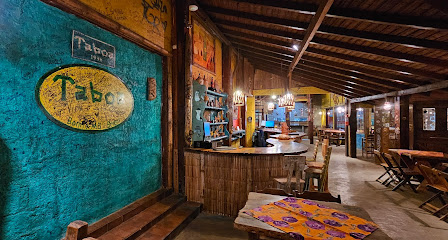
Restaurante O Casarão
Discover authentic Brazilian flavors at Restaurante O Casarão in Bonito - a culinary delight that celebrates local ingredients and traditions.
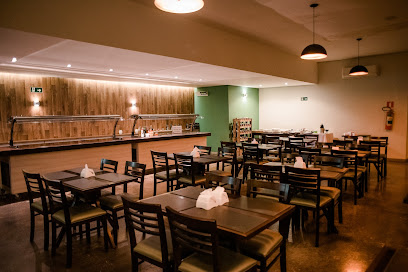
Varandas Restaurante
Experience authentic Brazilian cuisine at Varandas Restaurante in Bonito - where local flavors meet warm hospitality.
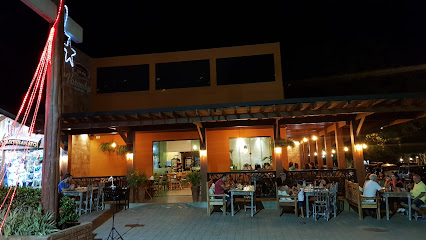
Churrascaria Cupim
Experience authentic Brazilian churrasco at Churrascaria Cupim in Bonito – where succulent meats and vibrant flavors await every visitor.
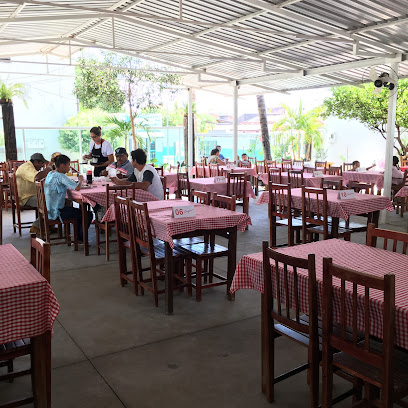
Pastel Bonito
Experience authentic Brazilian pastel at Pastel Bonito - where flavors meet tradition in the heart of Mato Grosso do Sul.
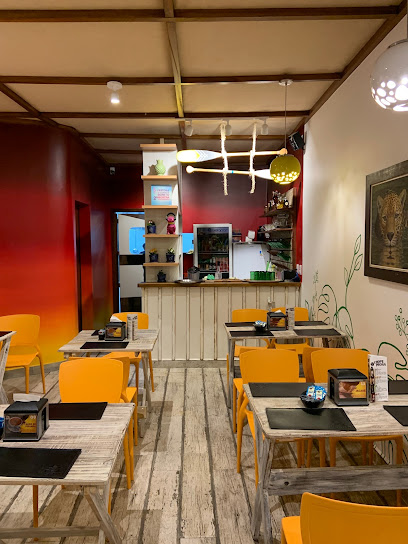
Vila Rebuá Gastronomia
Discover authentic Brazilian cuisine and vibrant nightlife at Vila Rebuá Gastronomia in Bonito - where every meal is a celebration.
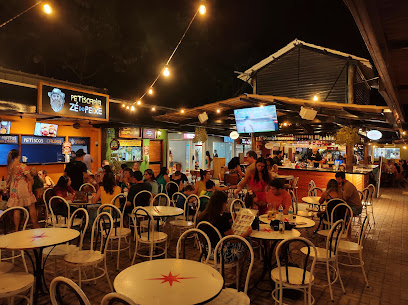
Vício da Gula Gastronomia café
Discover the culinary charm of Vício da Gula in Bonito: where delicious pastries meet gourmet burgers in a cozy atmosphere.
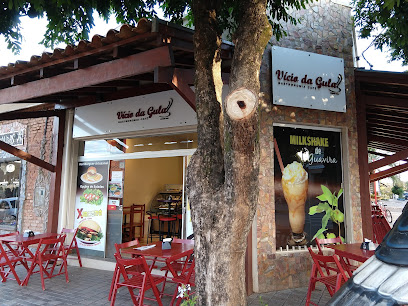
Restaurante Cantinho da Vovó
Discover authentic Brazilian flavors at Restaurante Cantinho da Vovó, where every meal is a culinary journey through Brazil's rich heritage.
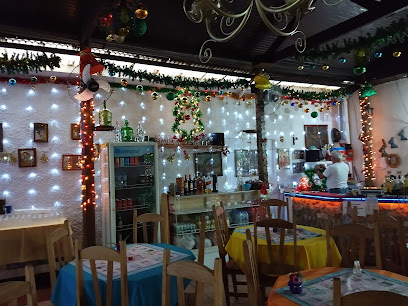
Turquesa Árabe Natural
Savor authentic Middle Eastern flavors at Turquesa Árabe Natural - Bonito's top spot for vegan and vegetarian delights.
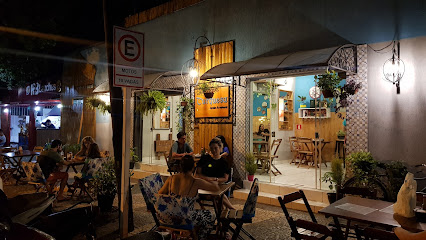
Restaurante Espaço Jack
Savor the rich flavors of Brazil at Restaurante Espaço Jack - a buffet paradise in Bonito offering local and international delicacies.
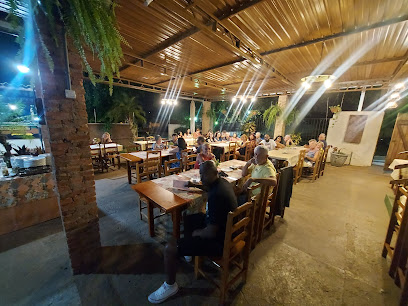
Markets, malls and hidden boutiques
Casa Das Pedras
Explore Casa Das Pedras in Bonito, Brazil, for unique souvenirs and local craftsmanship that captures the essence of Brazilian culture.
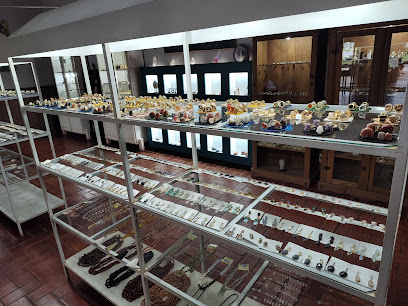
O Boticário
Explore the enchanting world of O Boticário in Bonito, Brazil—your destination for quality cosmetics, beauty supplies, and unique gifts.
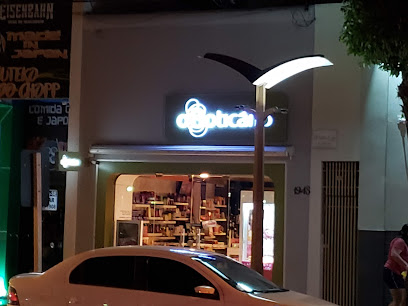
Thay Store
Discover unique Brazilian fashion at Thay Store, a charming clothing store in Bonito's Centro district offering stylish apparel and accessories.
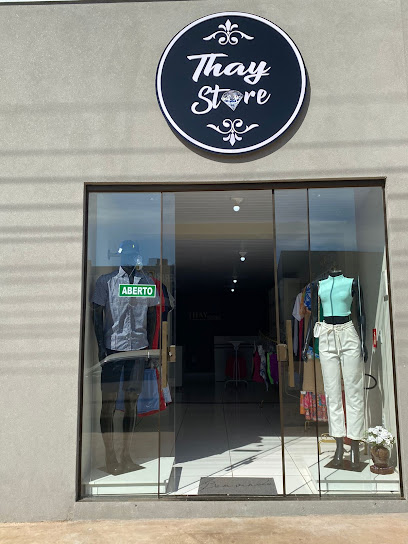
Havaianas Bonito
Discover the colorful world of Havaianas Bonito, where stylish flip-flops meet vibrant Brazilian fashion in the heart of Bonito.
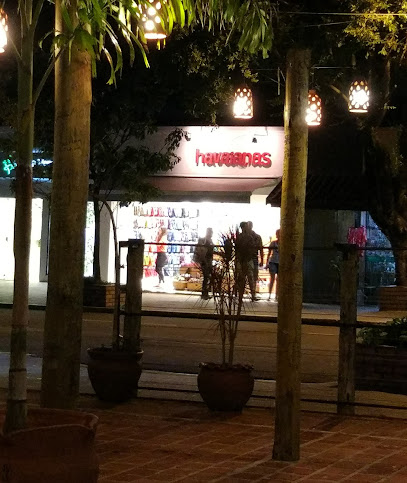
Shopping procriador
Explore Shopping Procriador in Bonito, Brazil - your ultimate destination for veterinary supplies and pet care tools.
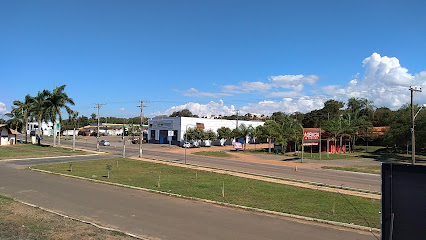
Camilla Boutique
Explore Camilla Boutique in Bonito for unique local crafts, fashion, and souvenirs that embody the vibrant culture of Brazil's stunning Mato Grosso do Sul region.
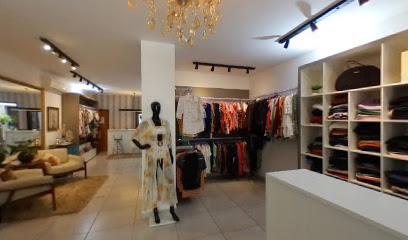
Artes da Terra
Discover authentic Brazilian crafts at Artes da Terra, Bonito’s premier gift shop for unique souvenirs and local artistry.
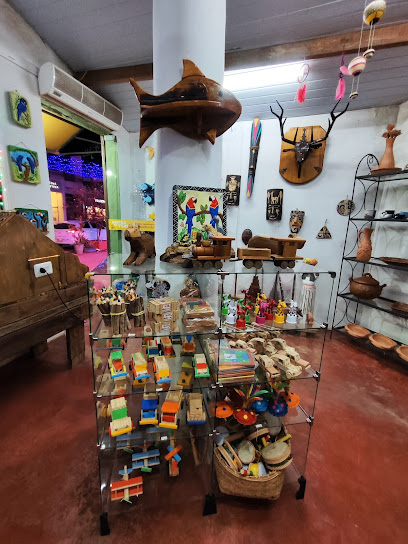
Mico Brasil
Discover the vibrant handicrafts and stylish swimwear at Mico Brasil, the perfect souvenir shop in Bonito, Brazil.
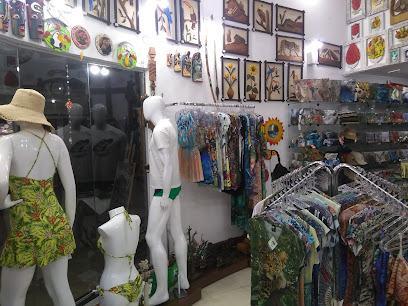
Boutique Taboa
Explore the essence of Bonito at Boutique Taboa, where local crafts meet sustainable elegance in a charming shopping experience.
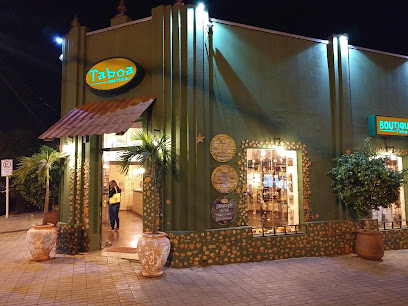
Loja Nomadas
Explore Loja Nomadas in Bonito for unique collectibles and local treasures that capture the essence of Brazilian culture.
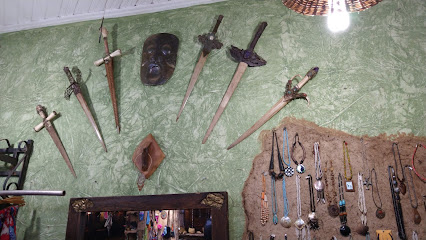
GoPro Store Bonito MS
Explore Bonito, MS like never before with the latest GoPro gear at the GoPro Store, your hub for adventure and memories.
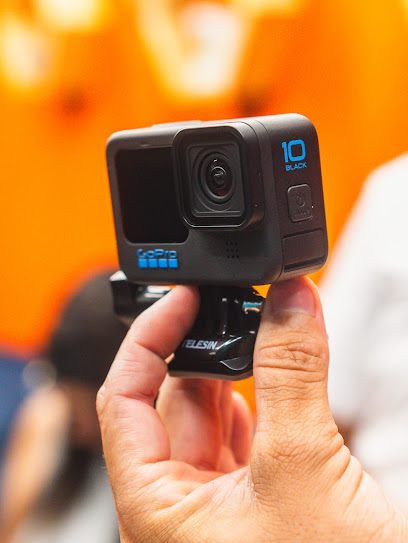
Renata Fashion Look
Discover Renata Fashion Look in Bonito for unique Brazilian clothing and accessories that reflect the vibrant local culture and style.
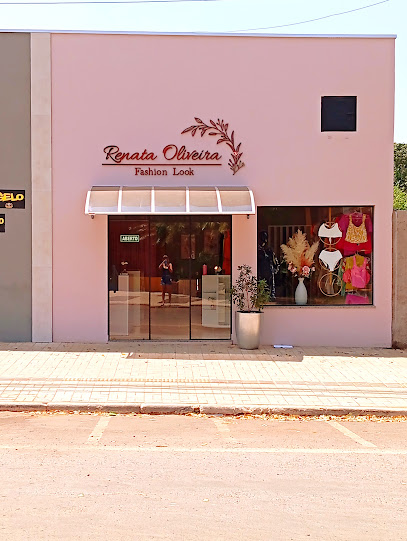
Shopping 10
Discover the vibrant Shopping 10 mall in Bonito, offering a diverse selection of beach and casual clothing for the whole family.
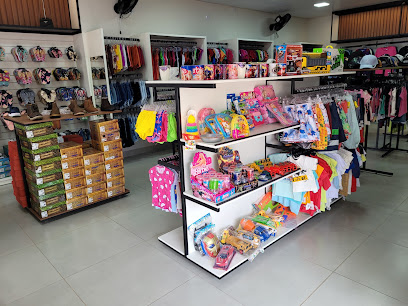
Galeria Curandêra
Explore Galeria Curandêra in Bonito, Brazil - a vibrant store showcasing local art and culture, perfect for unique souvenirs and authentic experiences.
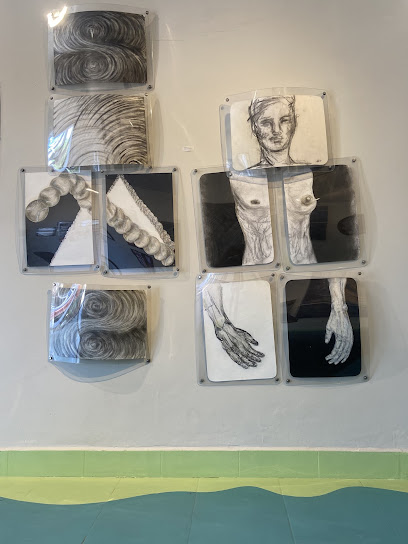
Arte Mania Camisetas e Artesanatos
Discover unique handcrafted souvenirs at Arte Mania Camisetas e Artesanatos, the perfect place for tourists seeking authentic Brazilian crafts in Bonito.
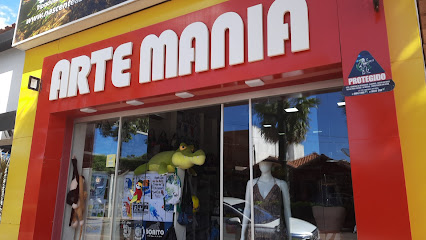
Essential bars & hidden hideouts
Taboa Bar
Discover the vibrant nightlife of Bonito at Taboa Bar, where delightful drinks and a lively atmosphere await you in the heart of Brazil.
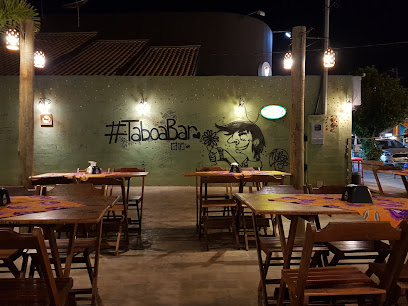
La Bonita
Experience the vibrant nightlife of Bonito at La Bonita, where live music and exquisite cocktails create unforgettable memories.
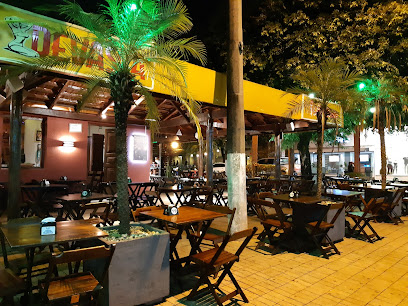
Boteco Juanita
Savor authentic Brazilian cuisine and drinks at Boteco Juanita, a lively gastropub in Bonito's heart, perfect for unwinding after your adventures.

Beco Da Arte Gastrobar
Savor the exquisite flavors of Brazilian cuisine at Beco Da Arte Gastrobar, Bonito's premier grill experience.

Pousada e Agência São Jorge - Bonito MS
Discover the heart of Bonito's nightlife at Pousada e Agência São Jorge, where delicious food and vibrant entertainment await.
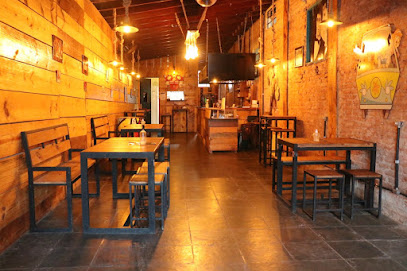
Caxara PUB
Discover the lively nightlife at Caxara PUB, Bonito's top night club and cocktail bar, perfect for unforgettable evenings filled with music and fun.

Garagem Beer Tabacaria e Bebidas em Geral
Experience the vibrant atmosphere of Garagem Beer Tabacaria e Bebidas em Geral, a top destination for drinks in Bonito, MS.
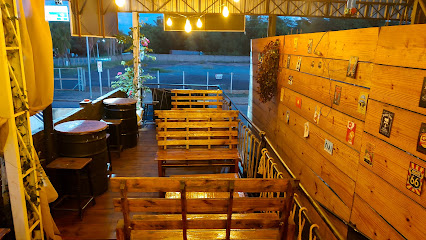
Tô a toa Lounge
Experience the vibrant flavors of Bonito at Tô a toa Lounge, a premier snack bar and grill offering exquisite tapas and a lively atmosphere.
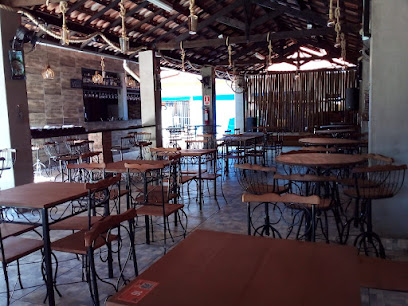
Palhoça Bar
Discover vibrant nightlife at Palhoça Bar in Bonito, a perfect blend of local flavors and lively atmosphere in Brazil.
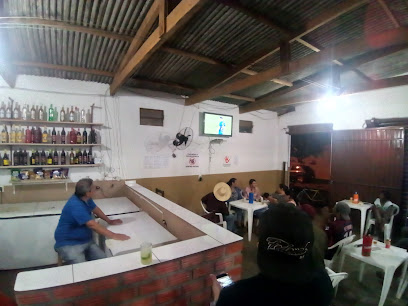
Santo Grau - Bar e Petiscaria
Experience the vibrant nightlife of Bonito at Santo Grau - Bar e Petiscaria, where delicious snacks and refreshing drinks await.
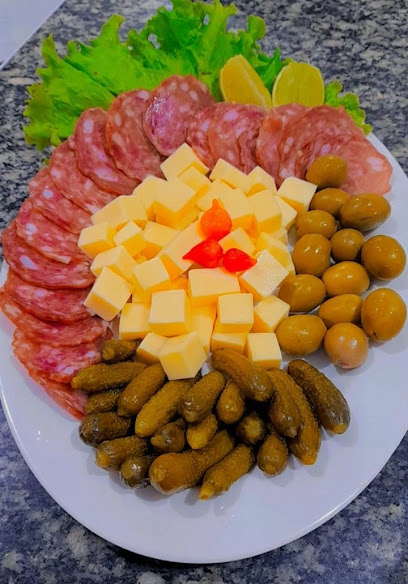
Albano Boteco
Discover the vibrant spirit of Brazil at Albano Boteco, Bonito's ultimate destination for authentic cuisine, lively ambiance, and local culture.
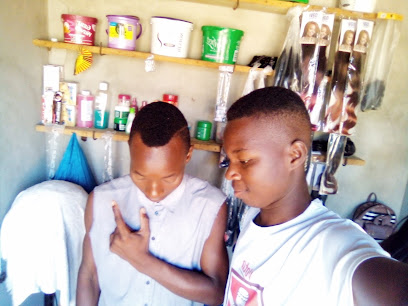
The Garden Bonito at Selina Bonito
Discover the vibrant ambiance and refreshing drinks at The Garden Bonito, the perfect bar escape in the heart of Bonito, Brazil.
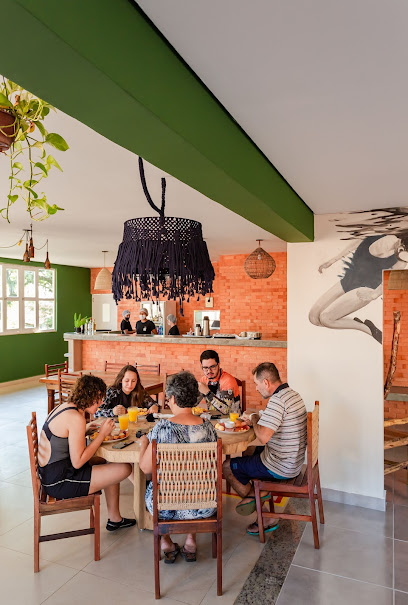
Tribus Bar
Discover Tribus Bar in Bonito: A vibrant pub experience with local culture, great drinks, and a lively atmosphere that captures the essence of Brazil.

Sarau de Bonito
Experience the vibrant nightlife at Sarau de Bonito, where live music and local flavors create unforgettable moments in the heart of Brazil.
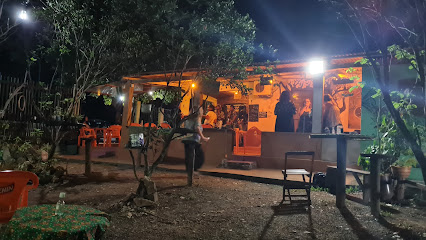
Bar Do Ponto
Experience the vibrant atmosphere and local flavors at Bar Do Ponto in Bonito, where every visit is a celebration of Brazilian hospitality.
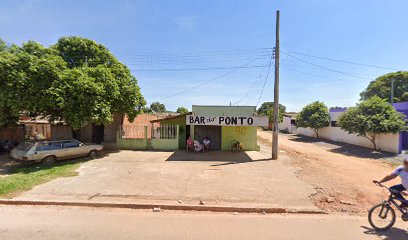
Local Phrases about Bonito
-
- HelloOlá
[oh-lah] - GoodbyeTchau
[chow] - YesSim
[seem] - NoNão
[now] - Please/You're welcomePor favor/De nada
[pohr fah-vohr/deh nah-dah] - Thank youObrigado/a
[oh-bree-gah-doh/ah] - Excuse me/SorryCom licença/Desculpe
[kohm lee-sen-sah/dehs-kool-peh] - How are you?Como vai?
[koh-moh vah-ee?] - Fine. And you?Bem. E você?
[behn. eh voh-seh?] - Do you speak English?Você fala inglês?
[voh-seh fah-lah een-glehsh?] - I don't understandEu não entendo
[eh-oo now en-ten-doh]
- HelloOlá
-
- I'd like to see the menu, pleaseEu gostaria de ver o cardápio, por favor
[eh-oo goh-stah-ree-ah deh vehr oh kahr-dah-pyoh, pohr fah-vohr] - I don't eat meatEu não como carne
[eh-oo now koh-moh kahr-nee] - Cheers!Saúde!
[sah-oo-deh] - I would like to pay, pleaseEu gostaria de pagar, por favor
[eh-oo goh-stah-ree-ah deh pah-gahr, pohr fah-vohr]
- I'd like to see the menu, pleaseEu gostaria de ver o cardápio, por favor
-
- Help!Socorro!
[soh-koh-roh] - Go away!Vá embora!
[vah ehm-boh-rah] - Call the Police!Chame a Polícia!
[shah-meh ah poh-lee-see-ah] - Call a doctor!Chame um médico!
[shah-meh oom meh-dee-koh] - I'm lostEstou perdido/a
[eh-stoh pehr-dee-doh/ah] - I'm illEstou doente
[eh-stoh doo-en-teh]
- Help!Socorro!
-
- I'd like to buy...Eu gostaria de comprar...
[eh-oo goh-stah-ree-ah deh kohm-prahr...] - I'm just lookingEstou só olhando
[eh-stoh soh oh-lhahn-doh] - How much is it?Quanto custa?
[kwan-toh koos-tah?] - That's too expensiveIsso é muito caro
[ee-soh eh moo-ee-toh kah-roh] - Can you lower the price?Você pode baixar o preço?
[voh-seh poh-deh bahy-shahr oh preh-soh?]
- I'd like to buy...Eu gostaria de comprar...
-
- What time is it?Que horas são?
[keh oh-rahs sah-oo?] - It's one o'clockÉ uma hora
[eh oo-mah oh-rah] - Half past (10)Meio-dia (10 horas)
[meh-oo-jee-ah (deez oh-rahs)] - MorningManhã
[mah-nyah] - AfternoonTarde
[tahr-dee] - EveningNoite
[noy-chee] - YesterdayOntem
[ohn-tehm] - TodayHoje
[oh-zhee] - TomorrowAmanhã
[ah-mahn-yah] - 1Um
[oom] - 2Dois
[doh-ees] - 3Três
[trehs] - 4Quatro
[kwah-troh] - 5Cinco
[seen-koh] - 6Seis
[says] - 7Sete
[seh-teh] - 8Oito
[oy-toh] - 9Nove
[noh-veh] - 10Dez
[dehz]
- What time is it?Que horas são?
-
- Where's a/the...?Onde fica o/a...?
[ohn-deh fee-kah oh/ah...?] - What's the address?Qual é o endereço?
[kwahl eh oh ehn-deh-reh-soh?] - Can you show me (on the map)?Você pode me mostrar (no mapa)?
[voh-seh poh-deh meh moh-strahr (noo mah-pah)?] - When's the next (bus)?Quando é o próximo (ônibus)?
[kwan-doh eh oh proh-ksee-moh (oh-nee-boos)?] - A ticket (to ....)Um bilhete (para ....)
[oom beel-yeh-teh (pah-rah ....)]
- Where's a/the...?Onde fica o/a...?
History of Bonito
-
Long before European settlers arrived, the region around Bonito was inhabited by indigenous tribes such as the Guarani-Kaiowá. These indigenous peoples lived in harmony with nature, using sustainable methods for hunting, fishing, and agriculture. Their deep spiritual connection to the land is still evident in the region's cultural practices and environmental stewardship.
-
The arrival of Portuguese colonizers in the 16th century marked a significant shift in the region's history. The colonizers sought to exploit the land for its natural resources, leading to the displacement and marginalization of indigenous communities. The colonial period also saw the introduction of new agricultural practices and the establishment of cattle ranching, which would become a cornerstone of the local economy.
-
Bonito was officially founded on October 2, 1948. The town's name, which means 'beautiful' in Portuguese, is a testament to the stunning natural landscapes that define the area. Initially, Bonito was a modest settlement centered around agriculture and cattle ranching, but its natural beauty soon began attracting attention from outside visitors.
-
In the late 20th century, Bonito experienced a tourism boom as word spread about its crystal-clear rivers, limestone caves, and rich biodiversity. The town quickly became a premier ecotourism destination, drawing visitors from around the world. This period saw significant investments in infrastructure and the development of sustainable tourism practices to preserve the region's natural wonders.
-
Bonito's commitment to sustainability and environmental conservation has earned it numerous accolades. The town has been recognized as one of the best ecotourism destinations globally, receiving awards for its efforts in preserving its unique ecosystems. This recognition has further solidified Bonito's status as a must-visit destination for nature enthusiasts.
-
Bonito is not just about natural beauty; it also boasts a rich cultural heritage. The town hosts various festivals throughout the year, celebrating everything from traditional music and dance to local cuisine. Events like the Festival de Inverno de Bonito (Bonito Winter Festival) showcase the vibrant cultural tapestry of the region, attracting artists and visitors alike.
Bonito Essentials
-
Bonito is located in the state of Mato Grosso do Sul, Brazil. The nearest major airport is Campo Grande International Airport (CGR), approximately 300 kilometers away. From Campo Grande, you can take a bus, which typically takes about 4-5 hours, or rent a car for a more flexible journey. Some tour operators also offer direct transfers from the airport to Bonito.
-
Once in Bonito, getting around is relatively easy. Taxis and ride-sharing services are available, though renting a car can give you more freedom to explore at your own pace. Many of the attractions are spread out, so having a vehicle can be advantageous. Additionally, guided tours often provide transportation to and from various sites.
-
The official currency in Brazil is the Brazilian Real (BRL). Credit and debit cards are widely accepted in Bonito, but it is advisable to carry some cash, especially for smaller establishments or remote areas. ATMs are available in the town, but be mindful of withdrawal limits and fees.
-
Bonito is generally considered a safe destination for tourists. However, it is always wise to take standard precautions. Avoid isolated areas at night and keep an eye on your belongings in crowded places. There are no specific high-crime areas targeting tourists in Bonito, but staying vigilant is always recommended.
-
In case of an emergency, dial 190 for police assistance, 192 for medical emergencies, and 193 for the fire department. Bonito has a local hospital and several clinics that can handle minor health issues. It is highly recommended to have travel insurance that covers medical emergencies.
-
Fashion: Do wear comfortable clothing suitable for outdoor activities. Avoid wearing expensive jewelry or flashy accessories. Religion: Do respect local customs and traditions. Public Transport: Do be courteous and offer your seat to elderly or disabled passengers. Don't be loud or disruptive. Greetings: Do greet people with a friendly 'Bom dia' (Good morning) or 'Boa tarde' (Good afternoon). A handshake is common. Eating & Drinking: Do try local delicacies such as 'piranha soup' and 'jacaré' (alligator). Don't refuse food or drink offerings, as it may be considered impolite.
-
To experience Bonito like a local, visit the local farmers' markets where you can buy fresh produce and artisanal goods. Engage with the locals, who are generally friendly and eager to share their knowledge about the area. Don't miss the opportunity to explore the natural beauty of Bonito, including its famous crystal-clear rivers, caves, and waterfalls. Consider joining a sustainable tourism project to learn more about the local environment and conservation efforts.
Trending Landmarks in Bonito
-
Liberty Square
-
Nascente Azul
-
Bonito Municipal Balneary
-
Recanto Ecológico Rio da Prata - Flutuação em Bonito MS
-
Gruta do Lago Azul Natural Monument
-
Sucuri River Bonito Ecotourism
-
Praia da Figueira
-
Gruta Catedral
-
Natural Aquarium
-
Balneário do Sol
-
Eco Park Porto da Ilha
-
Waterfall Boca da Onca
-
Estância Mimosa Ecoturismo - Cachoeiras em Bonito, MS
-
Zagaia Eco Resort
-
Ecological Park River Formoso
Nearby Cities to Bonito
-
Things To Do in Aregua
-
Things To Do in San Bernardino
-
Things To Do in Ypacarai
-
Things To Do in Hernandarias
-
Things To Do in Villarrica
-
Things To Do in Foz do Iguaçu
-
Things To Do in Puerto Iguazú
-
Things To Do in Carmen del Parana
-
Things To Do in Encarnacion
-
Things To Do in Santa Cruz de la Sierra
-
Things To Do in Tarija
-
Things To Do in Sucre
-
Things To Do in Potosi
-
Things To Do in Salta
-
Things To Do in São Paulo

